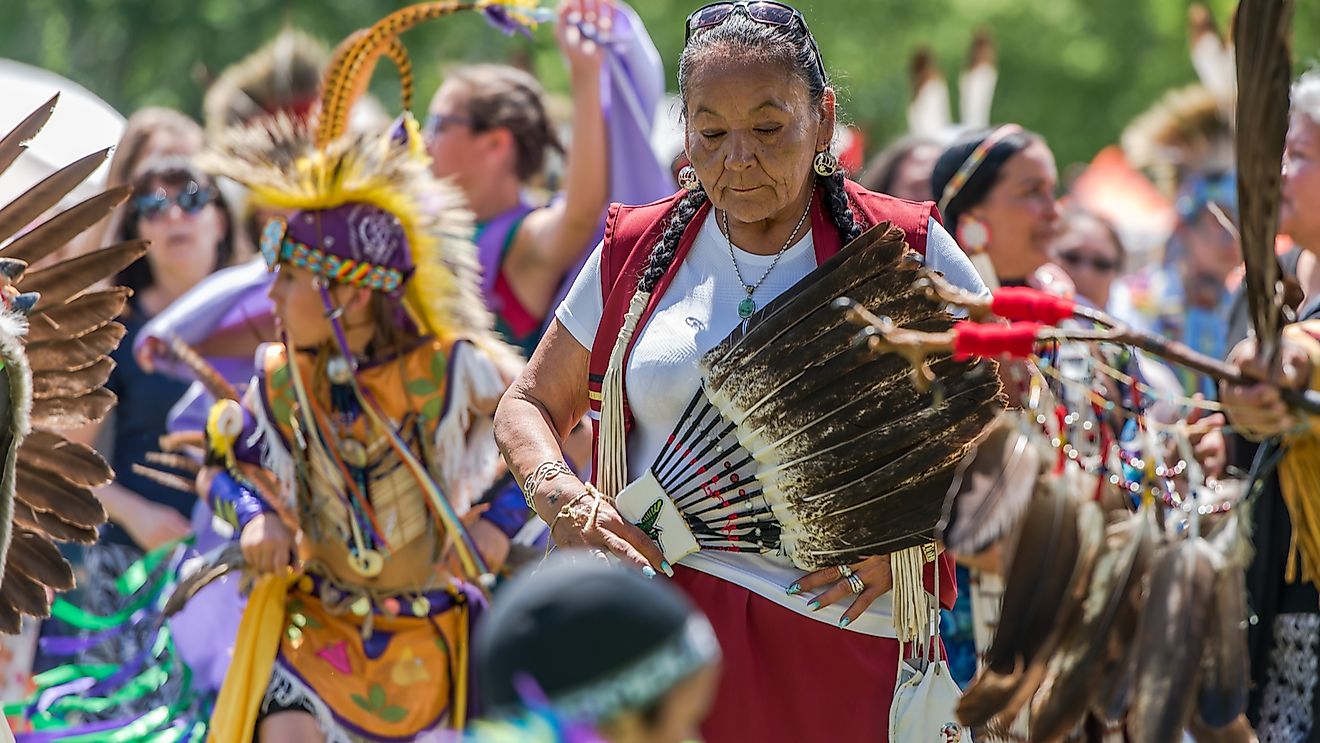Who Are The Cree People Of North America?

Communities of Native Americans are called "First Nations" in Canada and "Tribes" in the United States. The Cree are the largest Canadian First Nation. These days, about 200,000 Crees are living in Canada in dozens of self-governed communities. A small group of Cree also lives in the United States. When speaking their language, the Cree refer to themselves as Ayisiniwok, meaning "true men," Nehiyawok, meaning "speakers of our language," or Iyiniwok, meaning simply "the people."
Cree History And Culture
The Cree have lived in the Hudson Bay and James Bay areas of Canada for more than 6000 years. Most of this area is subarctic: the summers are short, and the winters are long and cold. The need to cooperate to survive shaped the Cree's values around honor, generosity, resilience, and bravery: they despised greed, and openly shared their belongings with guests or those in need. A hunting party would divide the prey regardless of who killed it, although the honor would belong to the main contributor.
In the past, the Cree lived in groups moving their camps several times a year, following herds of animals or places rich in roots, nuts, berries, and edible plants. Three-fourths lived in forests, and one-fourth - on the plains. They were careful to preserve the population of the animals they relied upon for food and never hunted for the sake of entertainment or rituals alone. All parts of the animal, including bones and tendons, were utilized.
In the 1800s, the Cree still controlled most of Canada. When the Europeans arrived, the Cree engaged in the fur trade with the French and British. But white settlers soon moved to their lands, forcing them to retreat further and further into the less valuable areas. Over time, the colonists' influence on Cree's life became tragically irreversible and the Native Americans were forced to abandon their semi-nomadic lifestyle for living on reservation lands.
Everyday Life And Transportation
There were two types of dwellings that the Cree used. In the woodlands, Cree people lived in wigwams, buildings made of birchbark. On the plain, the Cree would camp in tipis (or teepees), large buffalo-hide tents they could disassemble and move from place to place. Today, most Crees live in modern houses.
The Cree Indian tribe was well-known for their birchbark canoes. Eastern Crees were also fishing and hunting seals from canoes. Horses didn't exist in North America until colonists brought them over, so the Cree used dogs as sled animals.
Cree Wore Feather Headdresses And Face Paint?
Cree men wore breechcloths and leggings. The Crees also wore moccasins (leather or hide shoes) and robes or ponchos in colder weather. Cree Indian women wore long dresses, sometimes with removable sleeves. The Cree were using beadwork, embroidery, and ribbon appliques to embellish their clothes.
By tradition, the Crees wore fur, porcupine roach, or leather caps decorated with feathers. They adopted long feather headdresses from Sioux only in the 1800s. Today, the Cree only wear feathers in their hair on special occasions like a dance or ceremony.
Language And Important Words
The Cree language is the name for a group of closely related Algonquian languages. It is a musical verb-based language with long words and free word order. All five Cree dialects are written in a unique system of symbols that uses shapes to represent consonants and rotates them in the four directions to represent vowels.
These days, most Cree people speak English or French. Still, there are about 117,000 people across Canada who still know one of their native dialects. To greet someone in a friendly way in Cree, you can say "tansi" (tahn-see).
The word Wahkohtowin is essential to the Cree. Its literal meaning is "kinship" or "interconnection," but it is often used to refer to Cree law or Cree codes of conduct. In the Cree worldview, identity is inseparable from nature, land, home, community, or family; these things together constitute a healthy wahkohtowin.











